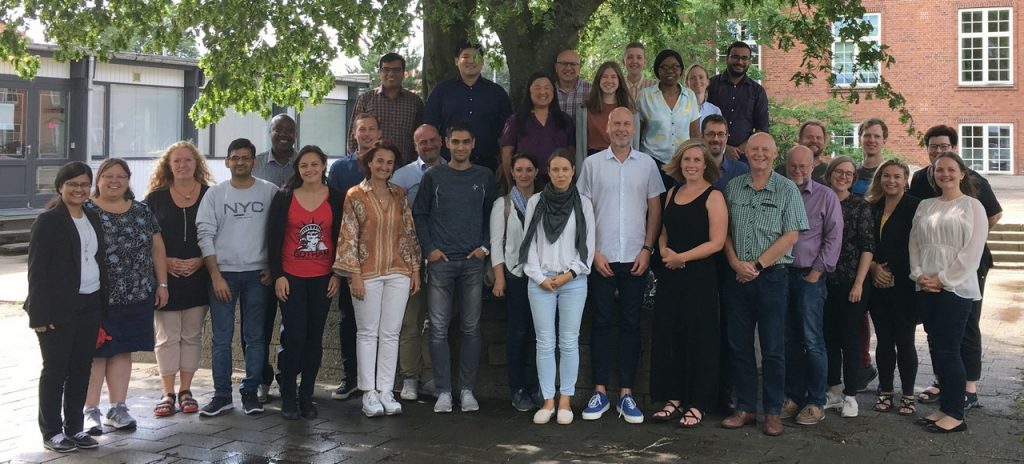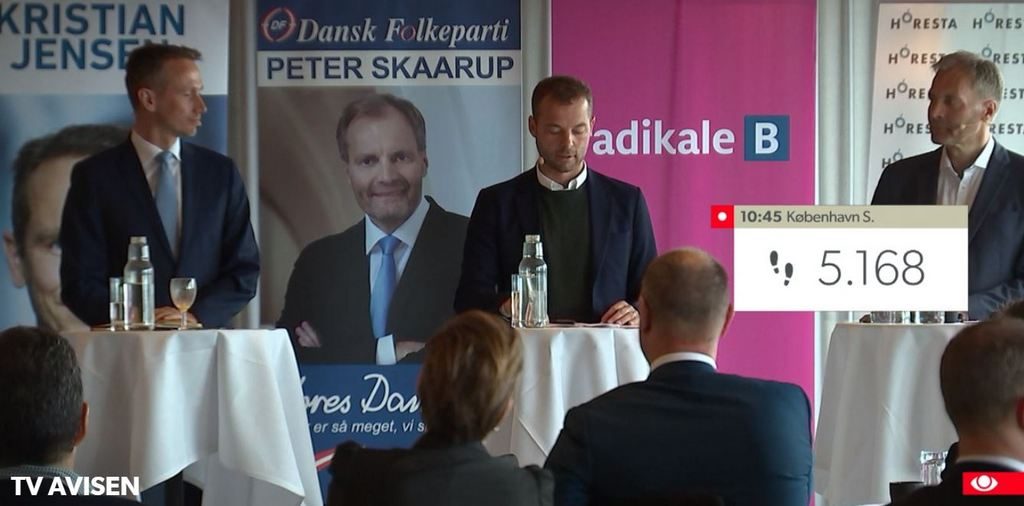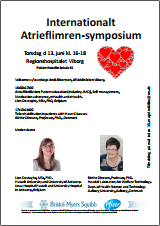Future Patient – telerehabilitering af hjertesvigtpatienter præsenteres på den nationale konference om rehabilitering i Olso, Norge, d. 12. september 2019 af professor Birthe Dinesen
 KnL
KnL
TTRN’s 3rd interdisciplinary PhD course, Odense
The Transatlantic Telehealth Research Network (TTRN) is having its 3rd interdisciplinary PhD course, “Research Methods in Innovation Processes for Digital Health Technology“, hosted by Kristian Kidholm, CIMT at Odense University Hospital.
There are PhD students from all over the world participating.
The Faculty at the course is from UC Berkeley, UC Davis, Center for Connected Health Boston, DTU, OUH, SDU, Aarhus University and AAU.
We are looking forward to some exciting days in Odense and to help the new research colleagues moving forward with their research projects.
Bevilling fra Hjerteforeningen til telerehabilitering af patienter efter TAVI operation
Laboratoriet for Velfærdsteknologi – Telesundhed & Telerehabilitering på Aalborg Universitet har i samarbejde med Hjerte-Lungekirurgisk afdeling samt Kardiologisk afdeling, Aalborg Universitetshospital modtaget bevilling fra Hjerteforeningen til studiet “Future Patient – telerehabilitation af patienter efter en TAVI operation”.
Barbara Brocki, som er fysioterapeut, PhD vil lede projektet, som en del af et postdoc studie. Vi ser frem til samarbejdet.
Læs om bevillingen på fysio.dk.
Japanere besøger Viborg Sygehus
TV2 Midt/Vest fortæller om Japanere, der besøger Regionshospitalet i Viborg i forbindelse med JD TeleTech 2019 workshop:
“Japanere besøger Viborg Sygehus: Det her samarbejde er meget vigtigt for os“
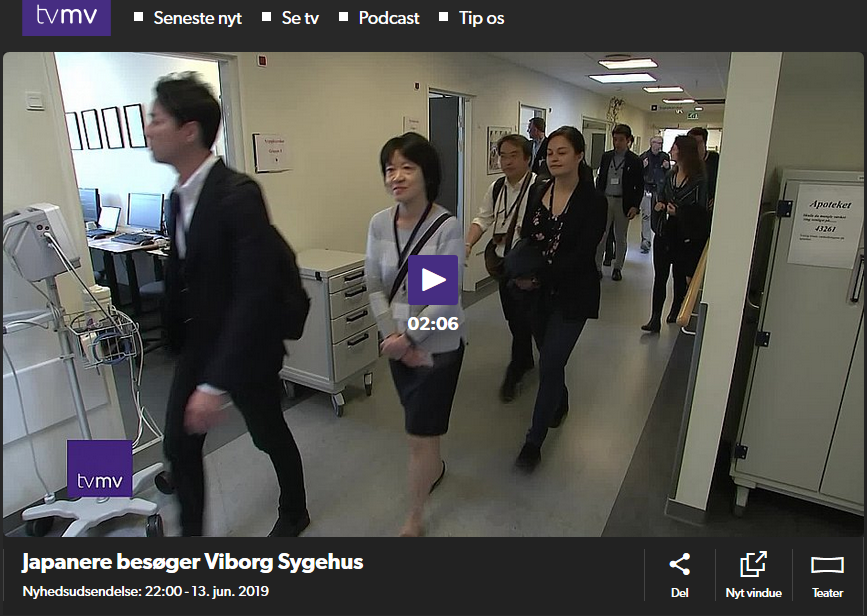
Se TV indslaget her.
New publication: Developing a telerehabilitation programme for postoperative recovery from knee surgery
Developing a telerehabilitation programme for postoperative recovery from knee surgery:
Specifications and requirements
The development of the sensor-based telerehabilitation programme was carried out based on user needs. The programme includes a portable platform for the patient as well as a web-based platform for the healthcare professional, thus allowing for an individualised rehabilitation programme. Communication, training, reporting, and information services were provided for the patients. Moreover, the portability and usability of the programme were enhanced by utilising the system in offline mode as well. Application The programme is currently being tested in the North Denmark Region to assess the feasibility and acceptance of a telerehabilitation programme as an alternative solution to the self-training programme for patients who have been discharged from knee surgery. The preliminary results of our assessment showed a high level of acceptance among the users. Discussion In this study, a semi-online
Ny artikel med resultater fra forskningsprojektet Teledialog
Ny artikel med resultater fra forskningsprojektet Teledialog er netop publiseret – se her.
Integration of Rehabilitation Activities Into Everyday Life Through Telerehabilitation: Qualitative Study of Cardiac Patients and Their Partners
By Dinesen et. al.
Abstract
Background: Implementation of cardiac rehabilitation has not been optimal, with patient participation rates below 50%. Factors that contribute to cardiac patients’ lack of participation in rehabilitation programs are patient motivation, logistical difficulties in getting to the rehabilitation facilities, lack of psychosocial elements, and individualization of activities in the rehabilitation programs. Telerehabilitation has been proposed as a new way to address the challenge of engaging and motivating cardiac patients and their partners to participate in rehabilitation.
Objective: The aim of this study was to explore the experiences of cardiac patients and their partners of participating in the Teledialog Telerehabilitation Program (TTP). The Teledialog program consisted of a digital rehabilitation plan, transmission of health data from patient’s home to hospital and health care center, and an interactive Web portal with information and training videos.
Methods: This case study used a theoretical approach combining the “community of practice” approach and self-determination theory. A triangulation of data collection techniques was used, including documents, participant observation (72 hours), and qualitative interviews with cardiac patients and their partners enrolled in the telerehabilitation group. A total of 14 cardiac patients, 12 patient spouses/partners, and 1 son participated in the study. The participants were interviewed at enrollment in the telerehabilitation program and after 12 weeks of participation in the program. Interview data were analyzed using NVivo 11.0.
Results: Patients and their partners found the Web portal ActiveHeart.dk and the electronic rehabilitation (e-rehabilitation) plan to be helpful tools for health education, coordinating rehabilitation goals, creating an overview of the data, and ensuring continuity in the rehabilitation process. The patients felt that the TTP treated them as individuals, gave them a sense of autonomy, and provided enhanced relatedness to health care professionals and partners and a sense of competence as active participants in their own rehabilitation process. Some patients missed being part of a community of practice with other cardiac patients and did not use the Web forum. Patients’ partners found that the telerehabilitation program gave them a sense of security and helped them balance their involvement as a partner to the patient and not push the patient too hard.
Conclusions: Cardiac patients and their partners found telerehabilitation technologies a useful digital toolbox in the rehabilitation process. Telerehabilitation motivated the patients to integrate rehabilitation activities into their work schedule and everyday life and made them feel like unique individuals. Participating in the Teledialog Telerehabilitation Program might not be a suitable strategy for all cardiac patients. Being a patient’s partner in the telerehabilitation program was associated with a heightened sense of security, navigation between active involvement in the rehabilitation process, being an equal partner, and not pushing the patient too hard.
Internationalt Atrieflimren-symposium, 13. juni i Viborg
Minister ser på Hjerteportalen
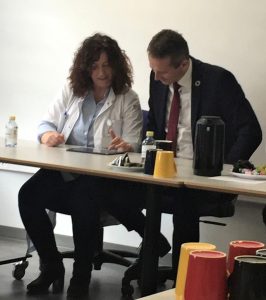
Finansminister Kristian Jensen har i den forgange uge besøgt Skive Sundhedshus. I den forbindelse blev ministeren præsenteret for Hjerteportalen.dk af overlæge Malene Hollingdal fra Hjerteafdelingen, Regionshospitalet Viborg & Skive.
Hjerteportalen er udviklet til hjertesvigtspatienter i forskningsprojektet Future Patient.

